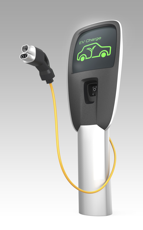Hundreds of thousands of Americans have begun reaping the advantages of plug-in electric or electric-hybrid vehicles. They can be charged at home, eliminate the need for most or all costly gasoline fill-ups, and help the environment by refraining from spewing pollutants into the air. For many people who drive short distances in urban settings, EVs are a dream come true.
But for those who live in climate-diverse areas of the U.S., electric vehicles can present some bothersome problems.

Extreme Weather = Subpar EV Performance
For example, EV drivers in the northern and eastern states may experience substantial hardships during the winter months. That’s because recent tests conducted by the Automobile Club of Southern California revealed that these electric cars severely underperform in colder temperatures. For example, the organization found that while EV batteries drove an average range of 105 miles in 75-degree weather (as is common in southern California), that distance plunged 75% to only 43 miles when the mercury read 20 degrees.
Cold isn’t the sole aggravation for EV drivers. Excessive heat can also reduce how far a plug-in vehicle can travel on a single charge, although not by as much as frigid temps. The same study found that in 95-degree weather, the average battery range was 69 miles, a drop of 33%.

The study tested three different electric vehicles: a 2012 Mitsubishi iMiEV, a 2013 Nissan Leaf, and a 2014 Ford Focus Electric. After being charged, the cars were driven on a dynamometer (basically, a fancy machine with rollers) in a climate-controlled space until the battery power ran out. Researchers followed the same drive cycles used by the Environmental Protection Agency that help calculate the MPG ratings seen on new vehicle window stickers.
Beware: Range Anxiety
Therefore, if you drive your EV in conditions that are far from optimum, you may not get the mileage out of a charge that you think – which could leave you stranded.
There’s even a name for the unease experienced by EV drivers relating to how far they think their vehicle will travel: range anxiety. While this concept has theoretically been around throughout the age of gas-powered vehicles, the infancy of the EV industry still means that its drivers are learning the ins and outs of owning and driving an electric vehicle. But many an EV driver has faced the fear of his or her EV exhausting its entire battery charge at a spot far away from home or any charging station. This actually happened to famed singer and noted environmentalist Neil Young, whose million-dollar modified 1959 hybrid-electric Lincoln Continental broke down on a highway near the California region of Donner Summit. When this happens, the only option is to call a mobile charging vehicle (AAA operates many of them in California).

Given these new findings, EV drivers are urged to take precautions depending on the weather conditions. Mapping out routes and knowing where public charging stations are located are also very important to prevent roadside maroonings. And always be sure to follow the manufacturers’ guidelines when charging and maintaining plug-in vehicles.
If you happen to lack auto insurance for your hybrid or all-electric vehicle, consider obtaining it from Auto Insurance Specialists. AIS has been providing drivers of all types of vehicles with ample, affordable auto coverage since long before anyone knew what EVs were. For more information, visit the AIS website or call (888)-772-4247.
Written by Chris Martin
The information in this article was obtained from various sources. This content is offered for educational purposes only and does not represent contractual agreements, nor is it intended to replace manuals or instructions provided by the manufacturer or the advice of a qualified professional. The definitions, terms and coverage in a given policy may be different than those suggested here and such policy will be governed by the language contained therein. No warranty or appropriateness for a specific purpose is expressed or implied.

